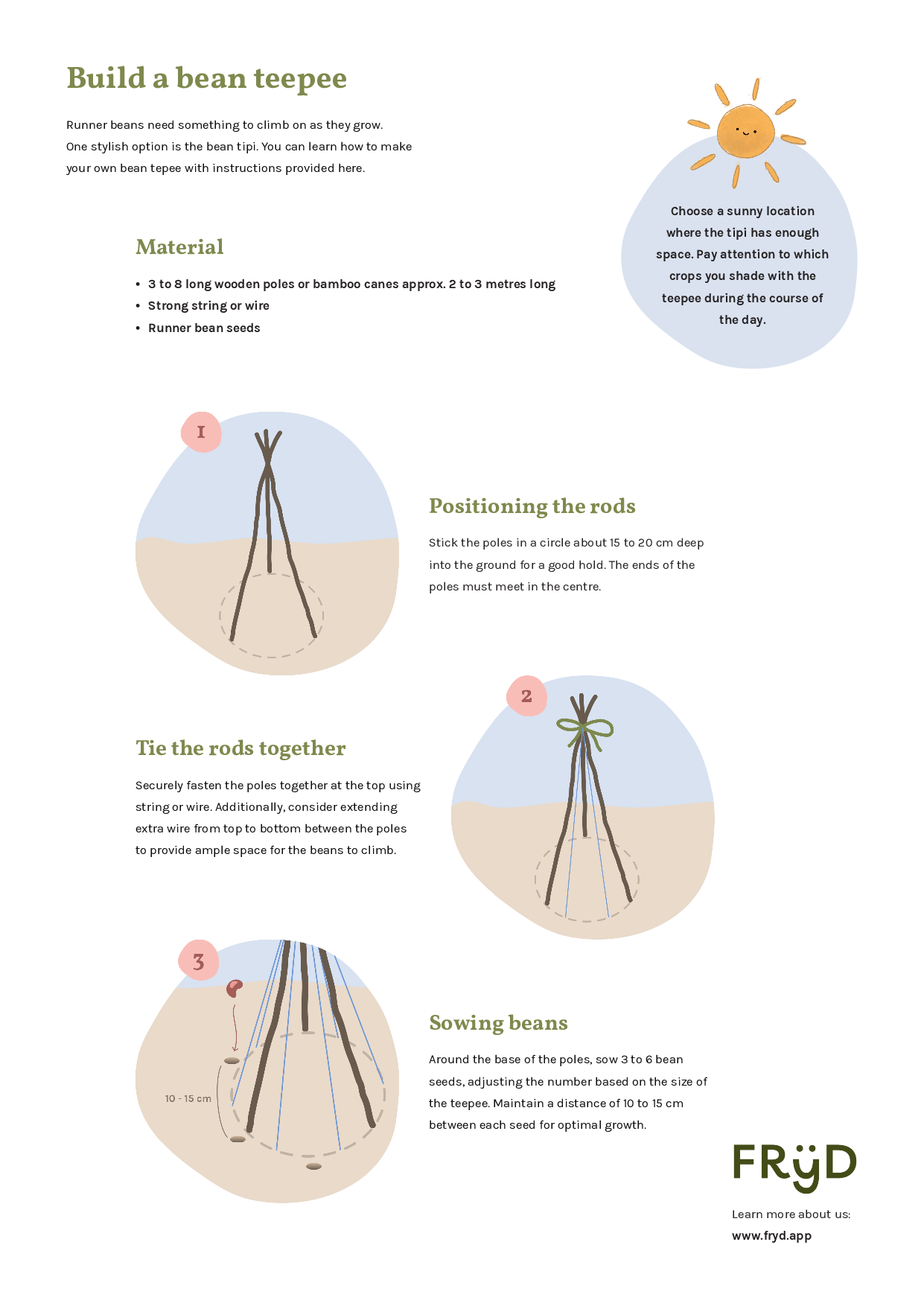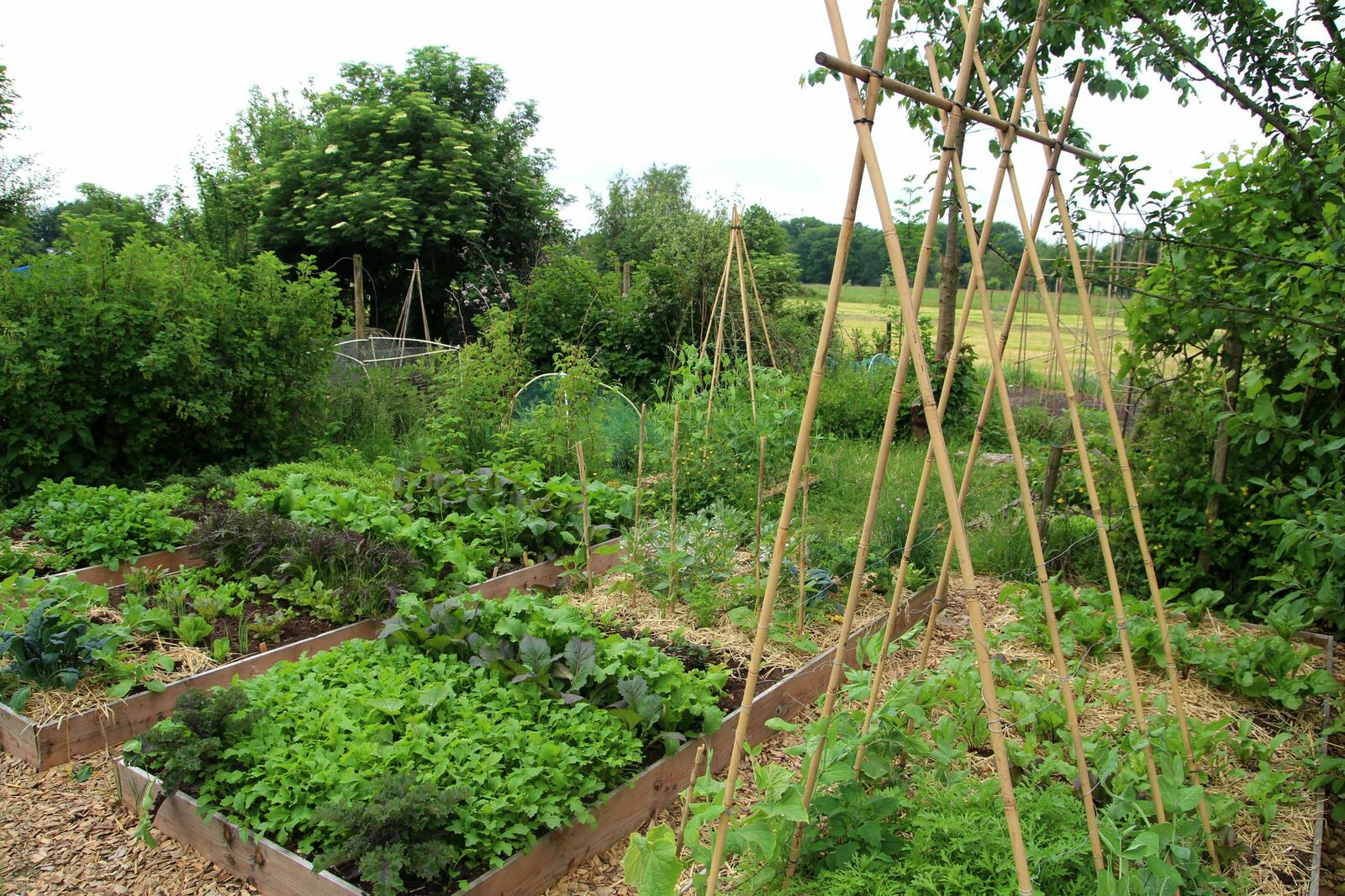
Planting, Growing and Harvesting Runner Beans
Runner beans are a popular crop in the vegetable patch. In this article, you will find out what you need to consider when growing, caring for and harvesting runner beans. We have prepared good and bad companions as well as mixed crop planting plans. You will also find instructions for a bean tipi and what you can use as an alternative climbing aid.
This Article Contains:
- Growing Runner Beans: What You Need to Know
- Runner Bean Varieties
- Sowing Runner Beans Correctly
- Support Ideas for Runner Beans With a Climbing Frame
- Building a Bean Teepee: A Guide
- Runner Beans in Mixed Cultivation
- Your Planting Plan With Runner Beans
- Harvesting Runner Beans
- PDF: Instructions for a Bean Tepee
- Frequently Asked Questions About Runner Beans
Quick Overview
Runner Beans: Tips on Cultivation and Sowing
- Location: sunny to semi-shady
- Sowing: from mid-March outdoors, no pre-breeding necessary
- Planting distance: 30 - 40 cm/11.8 - 15.7 in or in clumps with a spacing of 10 to 15 cm/3.9 to 5.9 in
- Attach climbing support for stability. You can also build a bean tepee here.
- Harvest: maturity period is 75 to 100 days and you can harvest continuously over the summer
Creating a Climbing Aid: Step by Step
- Select location
- Position the poles and tie them together
- Sow beans in clusters around the poles
Growing Runner Beans: What You Need to Know
Like all beans, runner beans belong to the legume family (Fabaceae). With over 15.000 different species, legumes are one of the most species-rich plant families of all. In general, a distinction is made between field beans (Vicia fabia) and garden beans (Phaseolus vulgaris). The garden beans include numerous species such as fire beans and kidney beans. Depending on their growth habit, these beans are classified as runner or bush beans. Runner beans grow upwards and can reach a height of up to 3 m/3.3 yd. As legumes, they can fix atmospheric nitrogen in the soil, which is why legumes are a popular green manure plant in agriculture.
Runner Bean Varieties
There is a wide range of varieties of runner beans. You will find varieties with green, yellow, pied and red/purple pods.
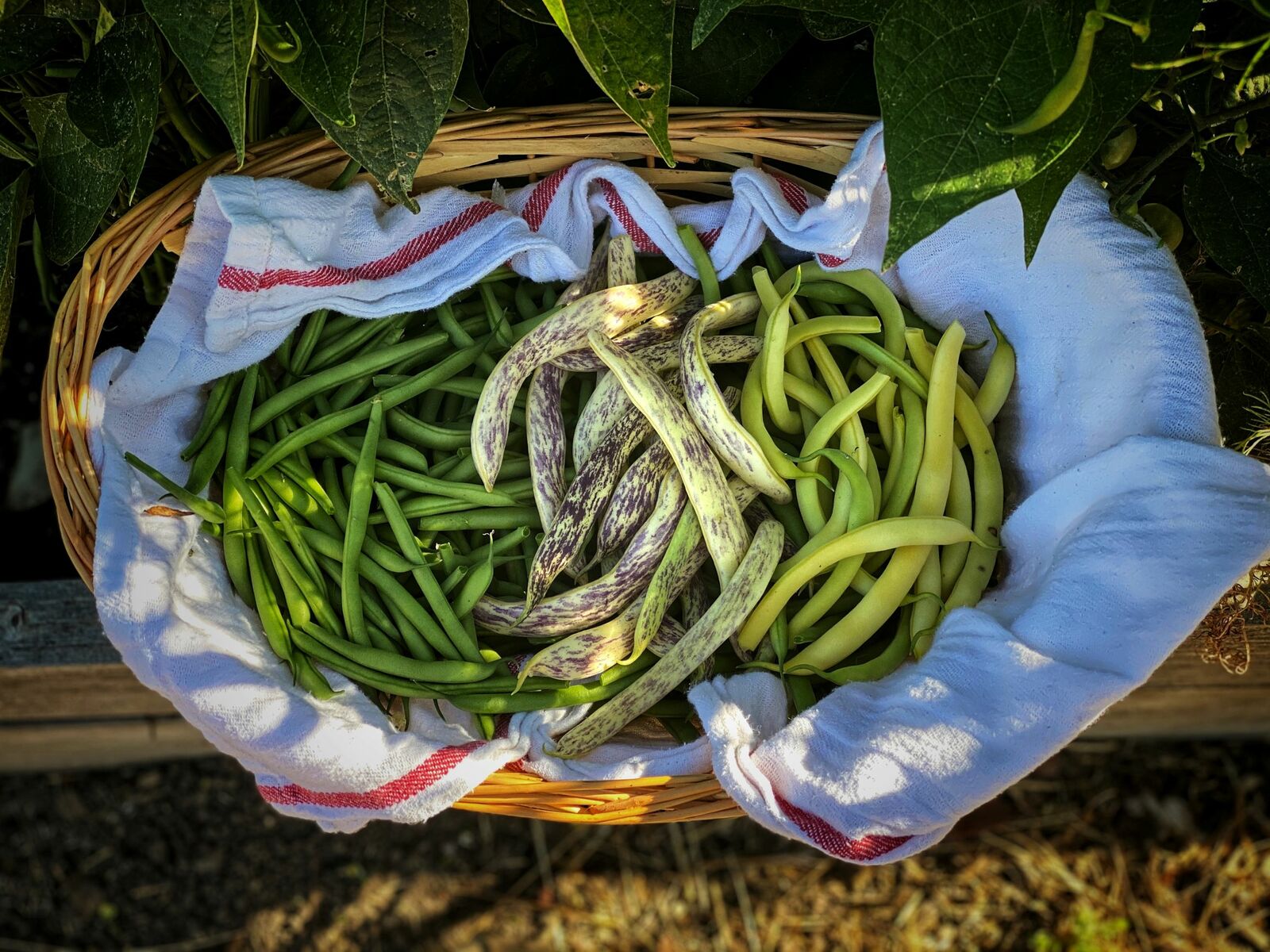
- Green runner beans: Cobra, Forellenbohne, Helda, Kipflerbohne Justin, Queen of the Neckar, Mechelse Tros, Siena, Styrian scarlet, Trebona, Weinländerin
- Yellow-hulled runner bean: Goldfield, Golden Gate, Kärntner Butter, Neckargold, Posthörnchen
- Blue-hulled runner beans: Blauhilde, Cornetti Viola Trionfo
- Old runner bean varieties: Cornetti Viola Trionfo, Kärntner Butter, Marmorierter Mond, Posthörnchen, Styrian scarlet, Weinländerin

Discover Numerous Varieties in Our Library
In our library you will find information on the individual varieties with cultivation periods, tips on planting and harvesting. You will also find good and bad neighbours to help you plan a mixed crop.
Discover the Library NowSowing Runner Beans Correctly
Sowing is only carried out from mid-May to the end of June, otherwise the seeds will rot in the cold soil. Place the seeds around the climbing support (4 to 6 seeds around each pole). Place them 3 cm/1.2 in deep in the soil, press them down well and keep them moist until germination.
Support Ideas for Runner Beans With a Climbing Frame
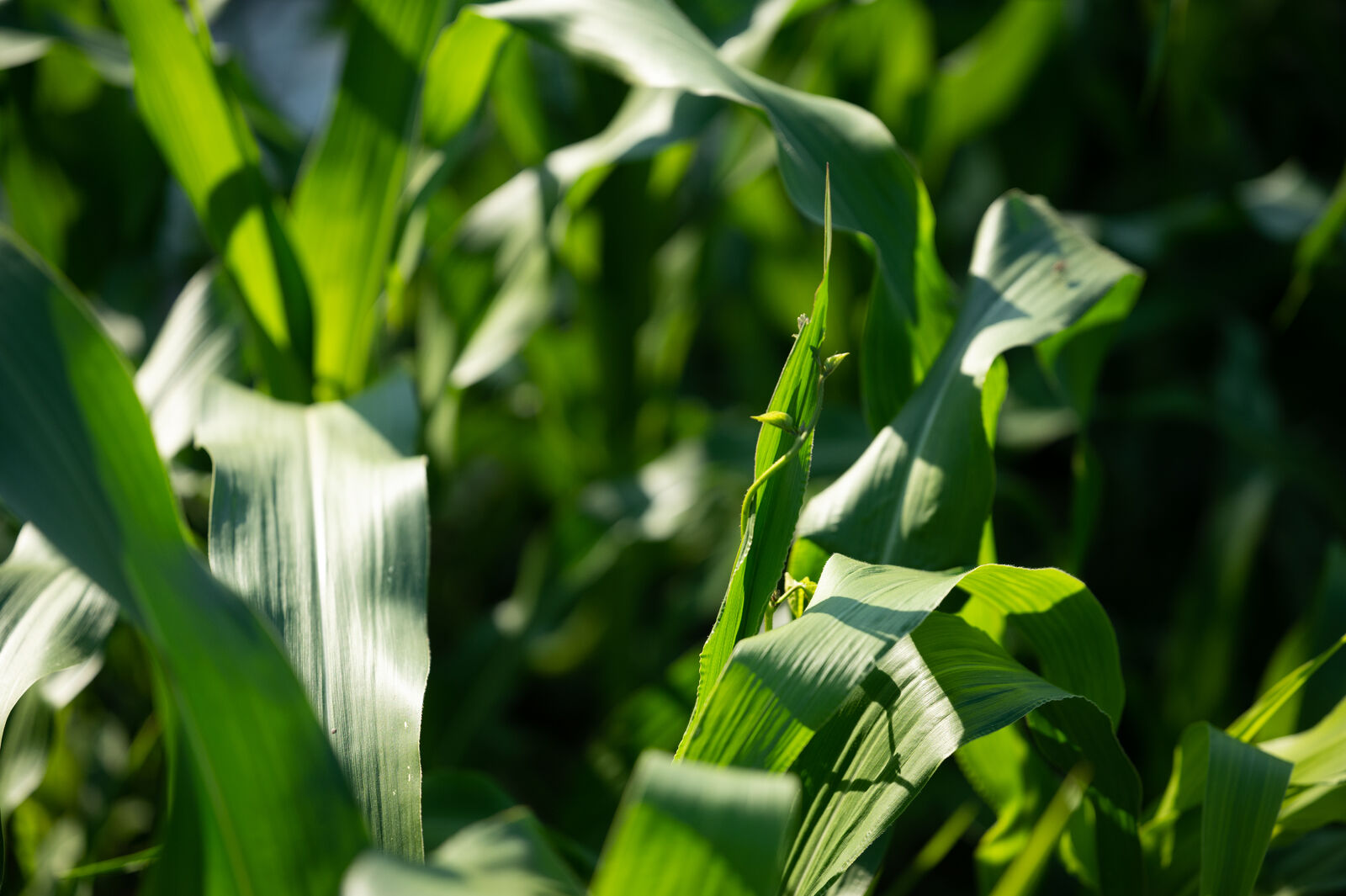
They are somewhat more demanding to care for than their bushy relatives: they need more warmth, water, nutrients and, above all, more space! Runner beans like plenty of moisture. To prevent the spread of fungal diseases, you should neither touch nor harvest the beans in wet weather. The rows of beans can be placed as wind protection for sensitive crops (e.g. cucumbers).
Wooden poles 2 m/2.2 yd high are used as climbing supports. These are either dug in vertically or leaned against each other in rows and stabilized with a crossbar. It is important to pay attention to the direction of the compass so that the beans do not shade themselves too much. Alternatively, the poles can also be used to build a "bean tipi" (= tent). In a milpa, which is a mixed culture with beans, pumpkin and corn, the corn serves as a strong climbing aid for the beans. You Can Find Out How to Set Up a Milpa and What a Milpa Is Here.
Building a Bean Teepee: A Guide
Runner Beans in Mixed Cultivation
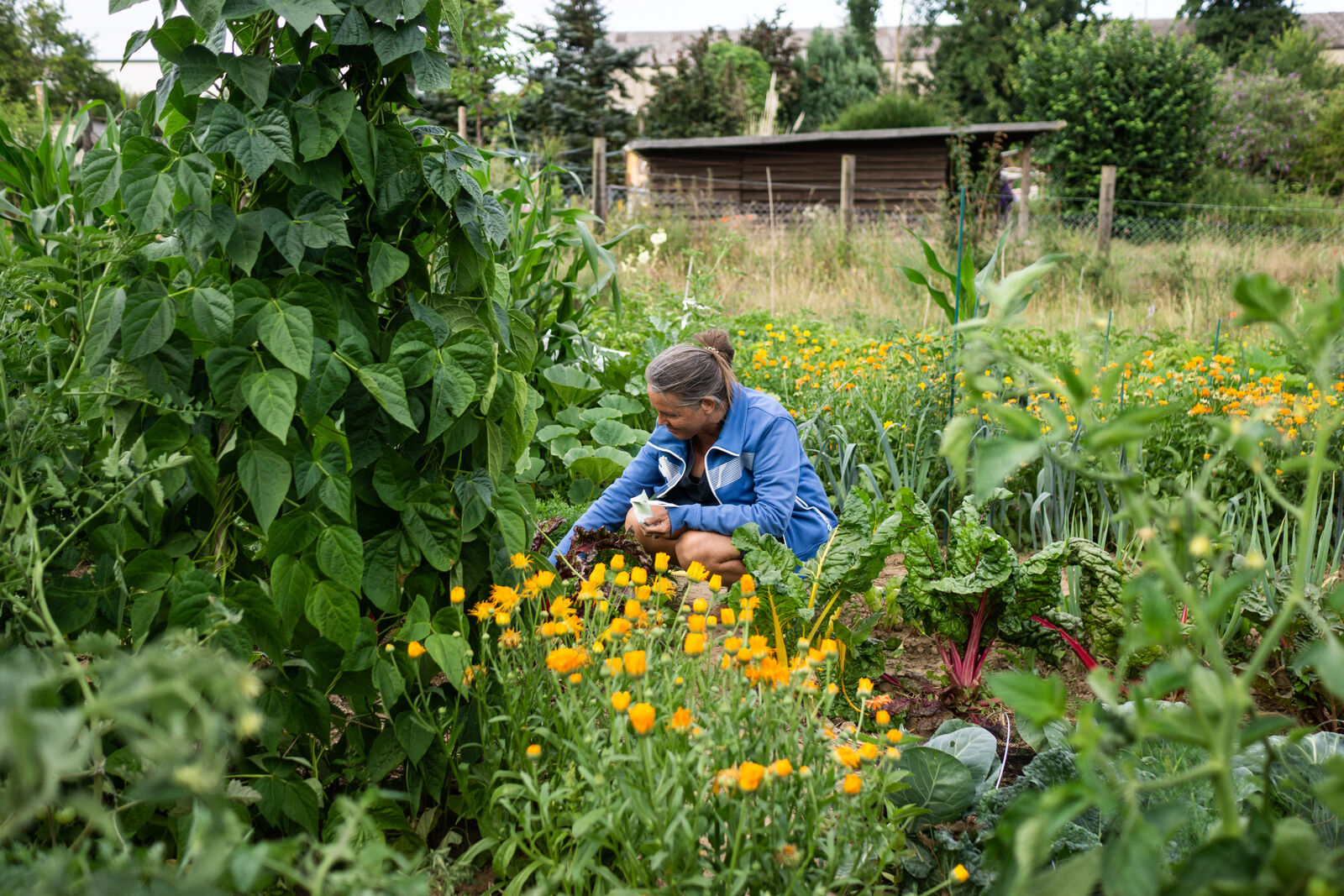
As legumes, beans are a very good partner in a mixed crop. Their deep roots can bind atmospheric nitrogen through a symbiosis with nitrogen-fixing bacteria and make it available to plants. This means that beans do not require additional fertilization and also benefit other plants in the bed. You can find out more about Beans in Mixed Cultivation With Good and Bad Companion Plants and Planting Plans in this article.
Your Planting Plan With Runner Beans
It's best to plant your beans in a colourful mixed crop. We have already created planting plans for you to get inspiration for your garden. You can also copy the plan directly and start gardening!
Table: Companion Plants for Runner Beans
| Good Companion Plants | Bad Companion Plants | |
|---|---|---|
| asparagus | oregano | bean |
| beetroot | pak Choi | chickpea |
| salsify | physalis | chives |
| borage | potato | fennel |
| cabbage | pumpkin | garlic |
| caraway | radish | topinambur |
| celery | rhubarb | leeks |
| chard | rutabaga | lentils |
| corn | sage | lovage |
| courgette | spinach | onion |
| cucumber | sunflower | pea |
| dill | tarragon | wild garlic |
| lettuce | turnip | |
| nasturtium |
Harvesting Runner Beans
The ripening period until the first harvest is approx. 75 - 100 days, depending on the variety. Fresh harvest throughout the summer. The young, tender beans taste best. It is therefore better to harvest runner beans early, before they become hard. They can be used together with the pod. Beans must always be cooked, as they are poisonous when raw! To obtain your own seeds, simply allow the pods to fully ripen on the plant and dry out. Then remove the bean seeds from the dry pods, allow them to dry again and store them for next year. Bean seeds generally keep for 3 - 4 years.
If you have any questions or comments, please write to us at [email protected]. Would you like to receive helpful gardening tips all year round and plan your own beds optimally? Then register here or download the Fryd app for Android or iOS.
Fryd - Your digital bed planner

Marie
Marie is an agronomist. She is particularly interested in the sustainable and organic cultivation of vegetables and other plants. In her own garden, she gained experience and likes to try things out to learn from nature. She is particularly interested in the values and principles of permaculture, in order to contribute not only to the well-being of nature, but also to the well-being of people and future generations.
Learn MoreCurrent Topics in the Community
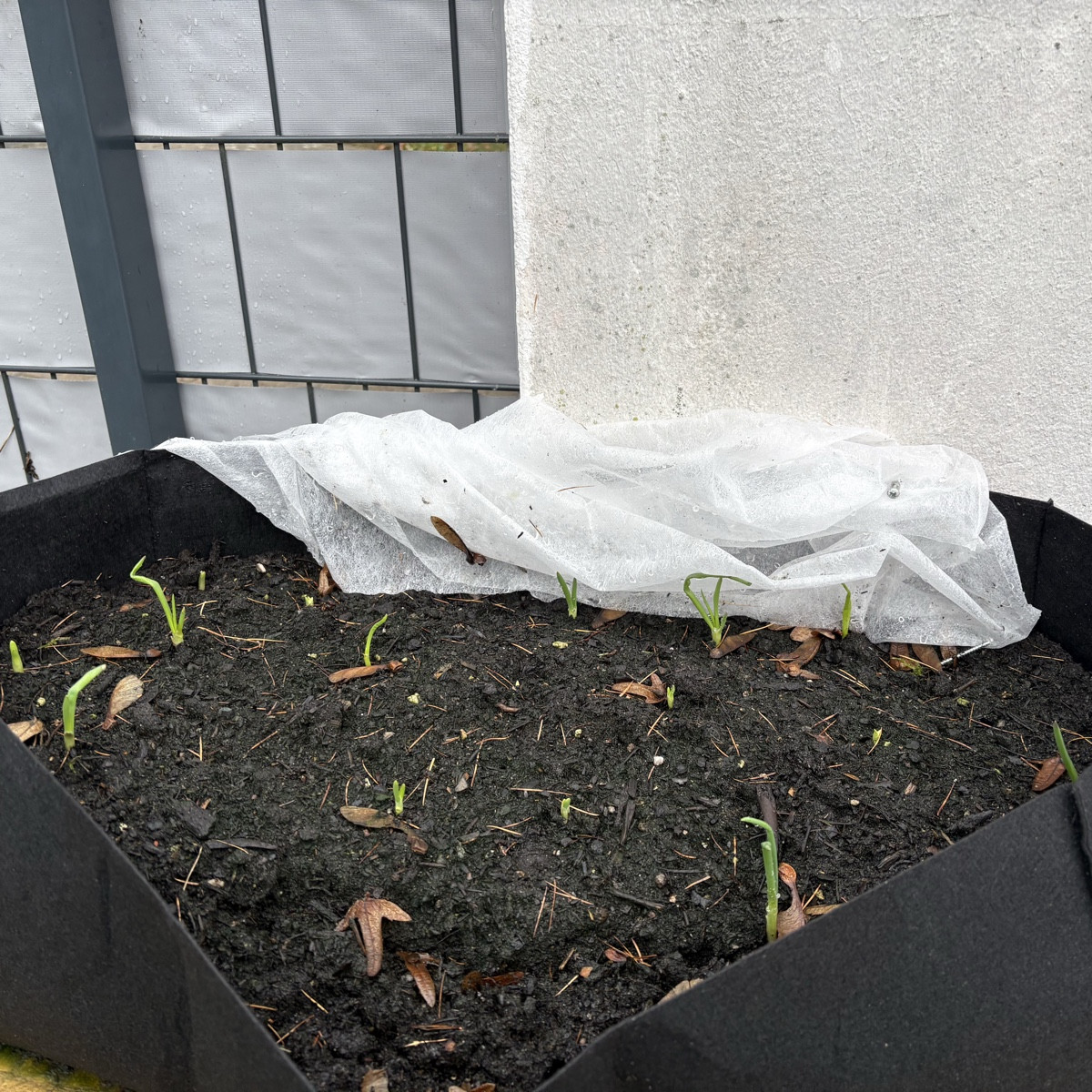
Liked 1 times
My winter onions are also growing quite well. They are of the Red Cross variety. I planted them on 28.10 in a felt pot 60x30x20 cm
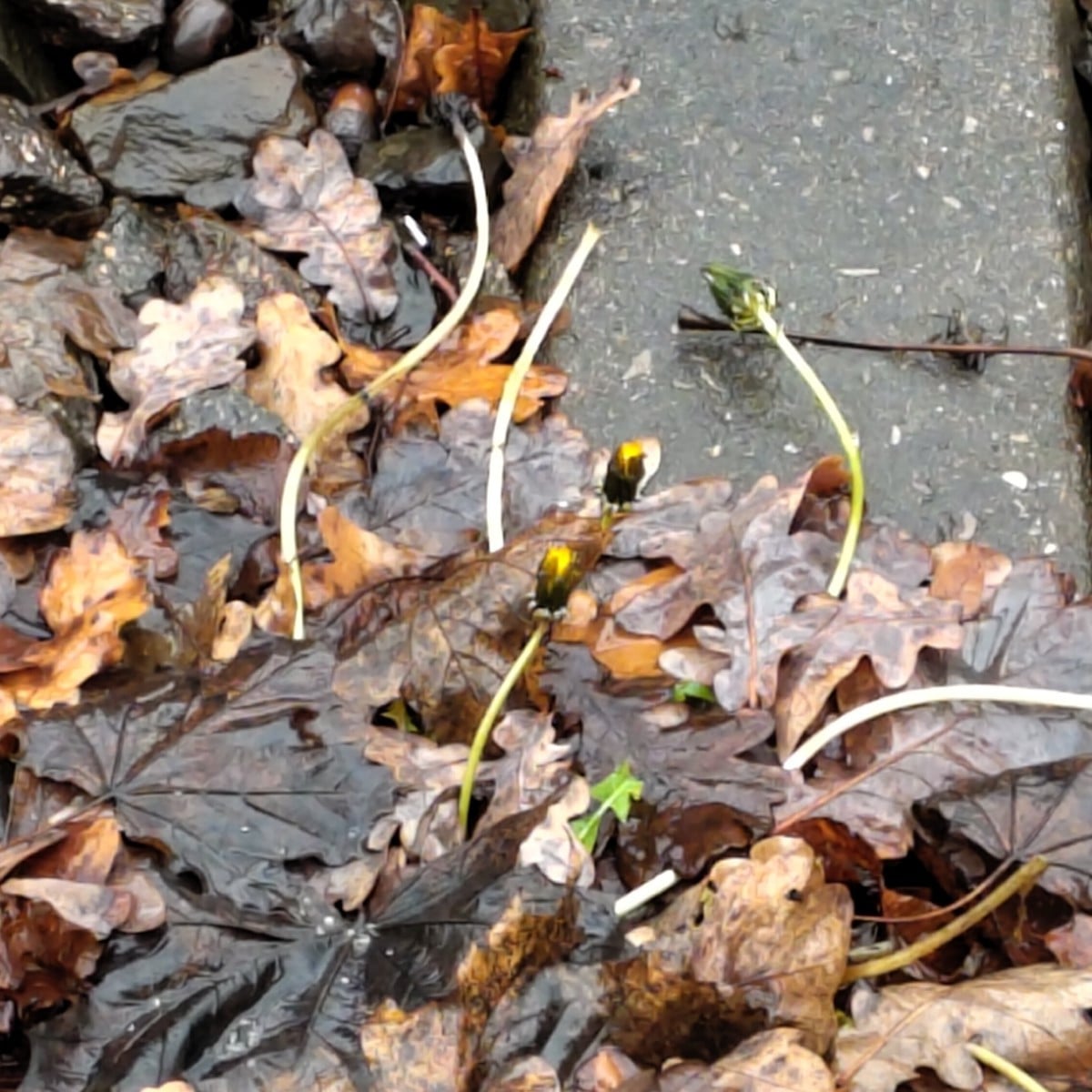
Liked 6 times
Another post from the curiosities section: I noticed this dandelion at the streetcar stop in a 'wintry' 13°C weather. It obviously thinks that snow and double-digit frost were enough winter and is now pushing new flowers through the foliage. It's a shame it's by the tracks, otherwise it would probably have ended up in my salad. 😋

Liked 16 times
As a suggestion for those who eat citrus fruits and have some time in the evening: simply cut a few simple shapes out of them with a sharp knife and dry them on the heater. The next day it was bone dry in our house ;)
Show 3 answersPopular Articles
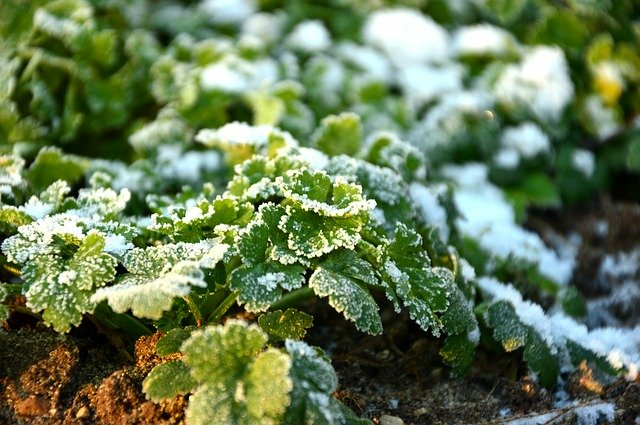
Overwintering Parsley: How to Do It Successfully
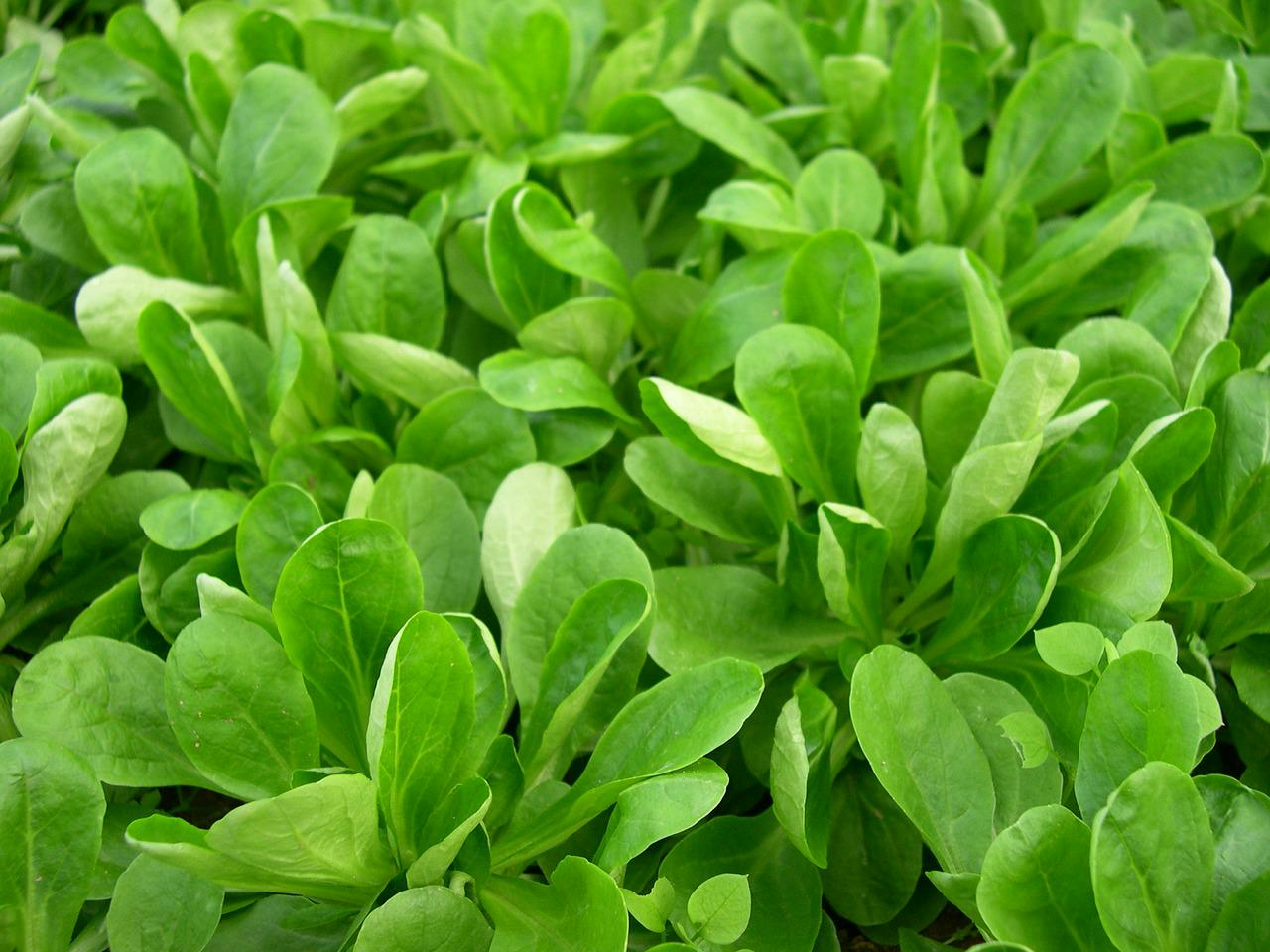
How to Grow Lettuce in Winter: Varieties, Sowing, Harvesting

Growing Sage Plant: Tips for Sowing and Harvesting
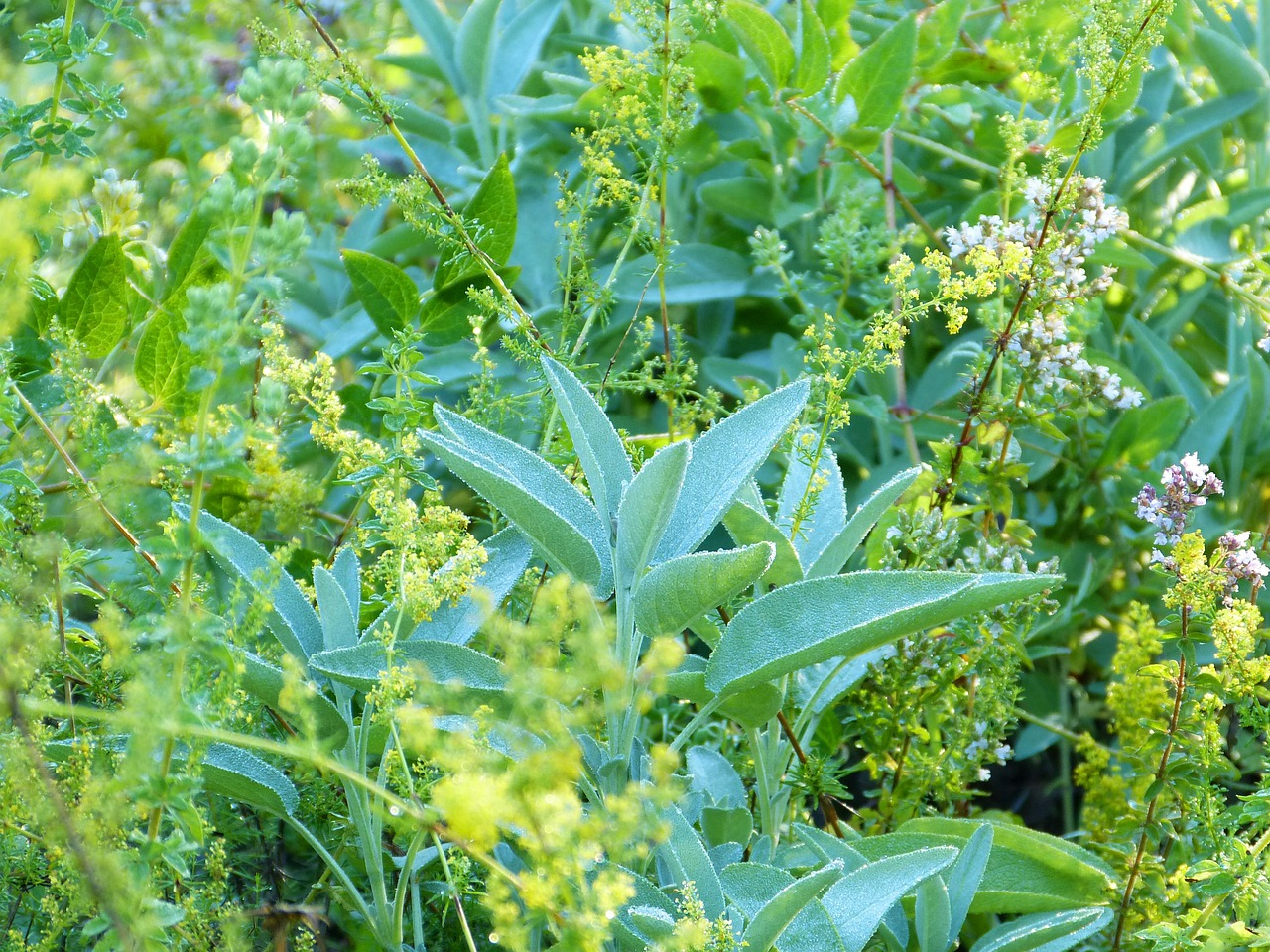
What Herbs Can Be Planted Together?
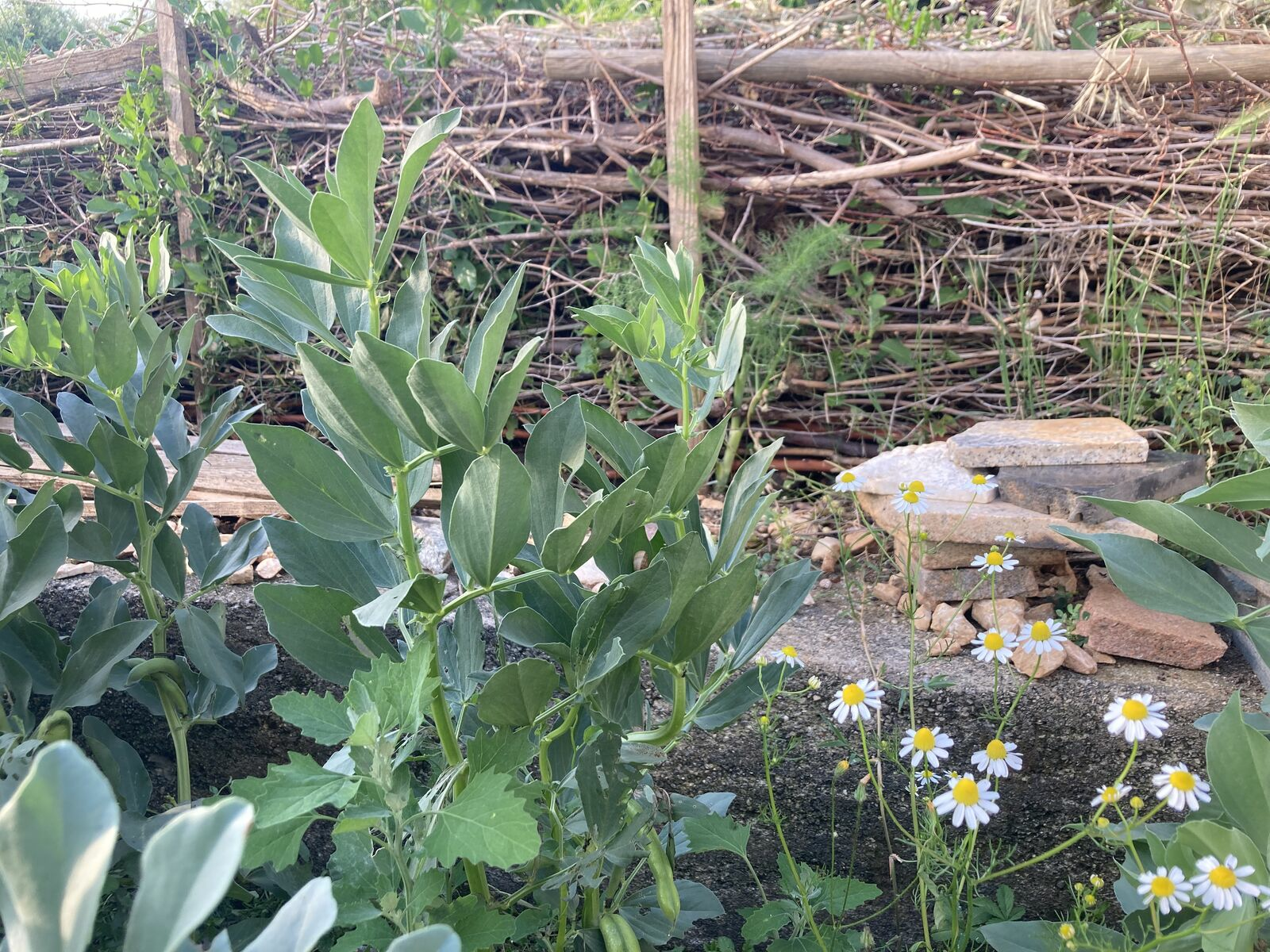
Create & Design a Permaculture Garden
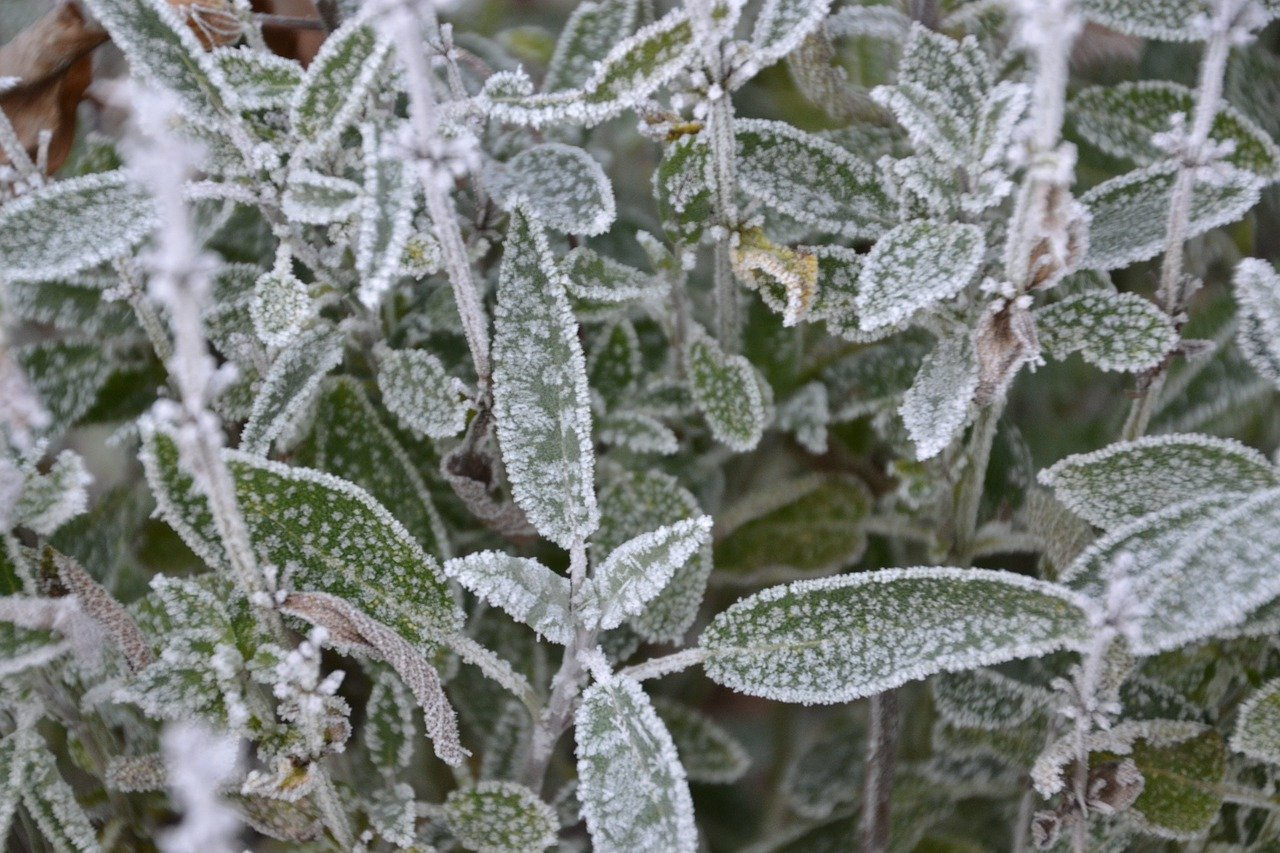
Overwintering Plants: Tubs, Pots and Raised Beds

Pruning, Fertilizing & Propagating Currants: Care Tips
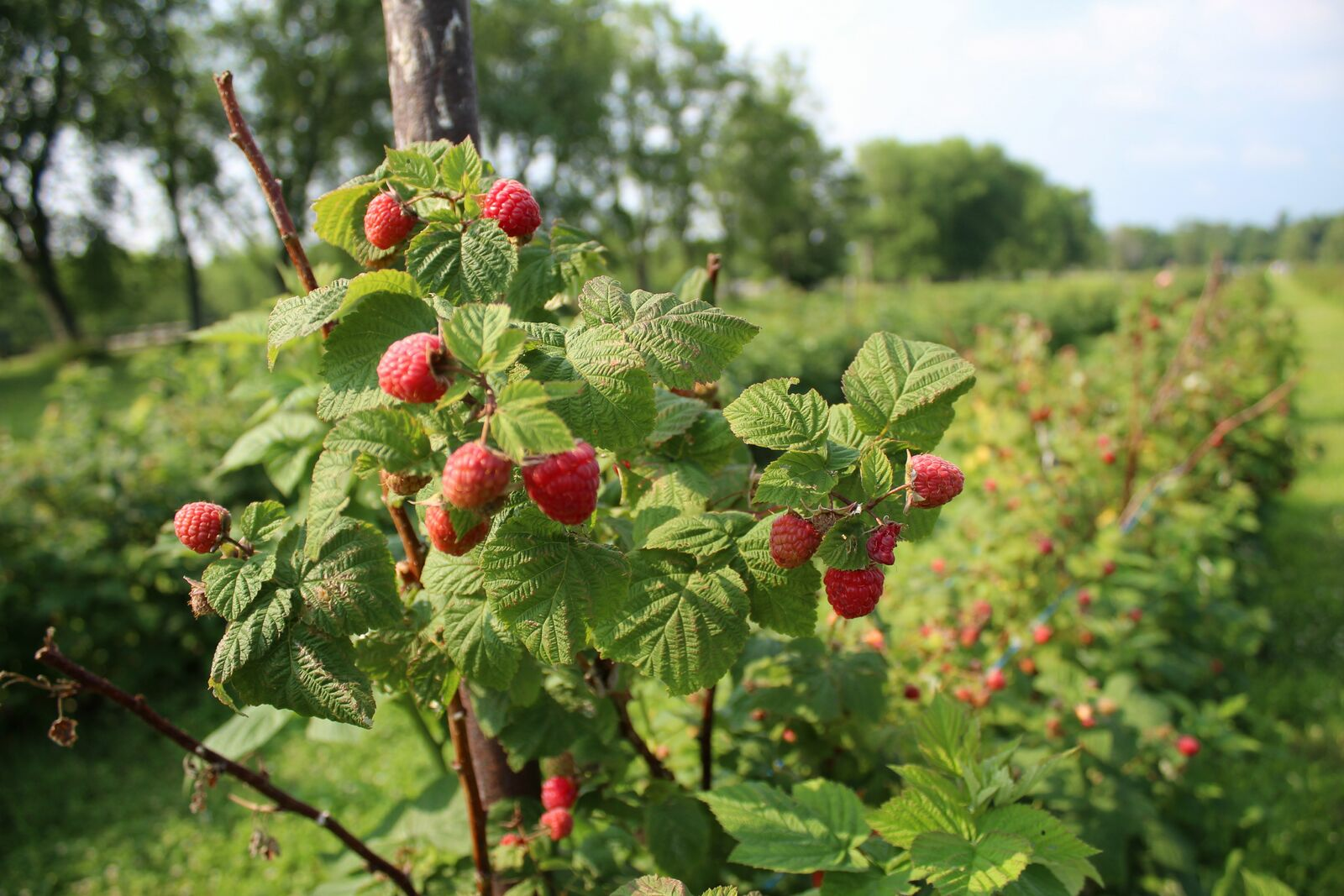
Pruning Raspberries: How to Do It
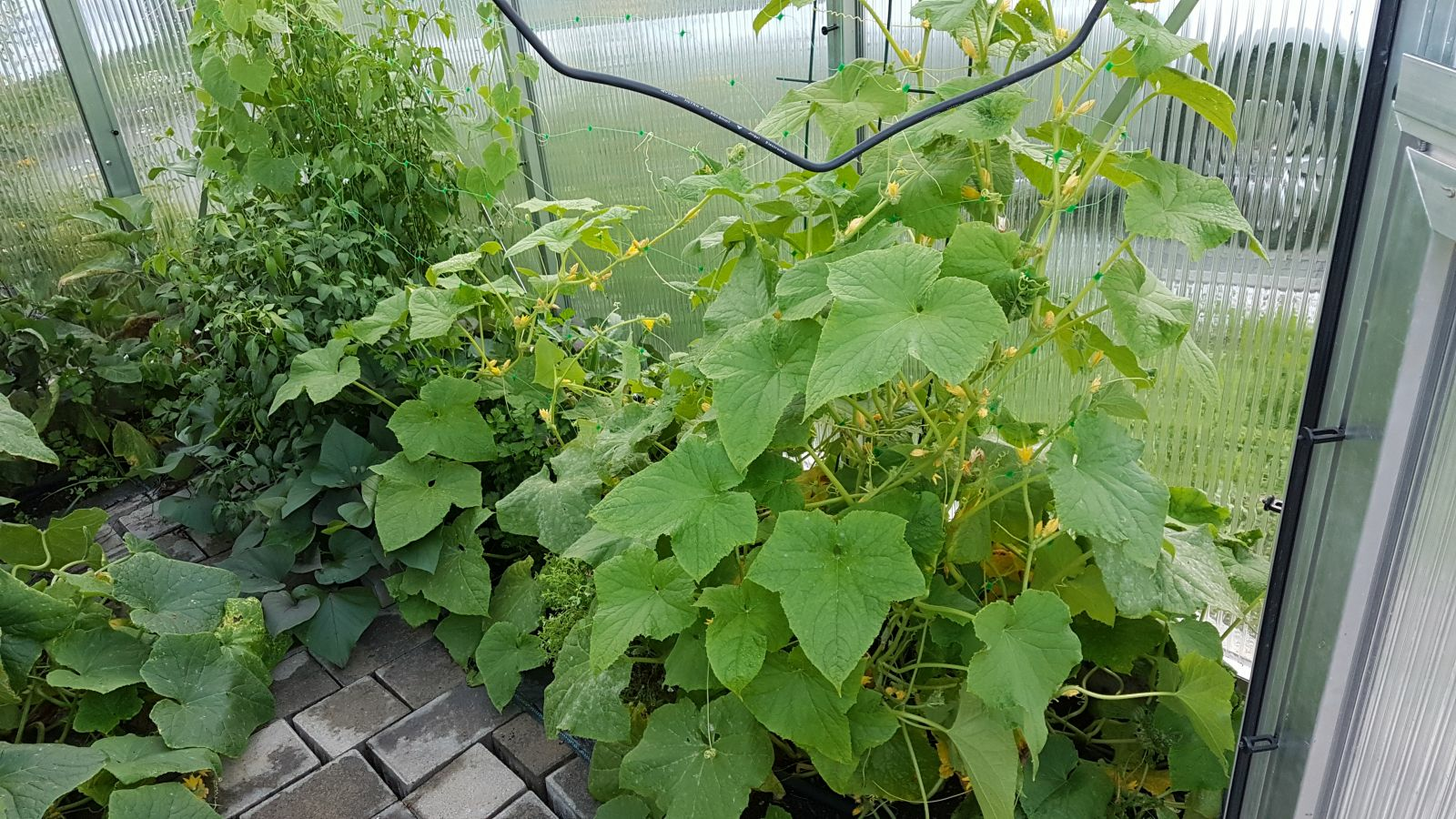
Vegetable Garden With Greenhouse: How to Use Greenhouse Effect
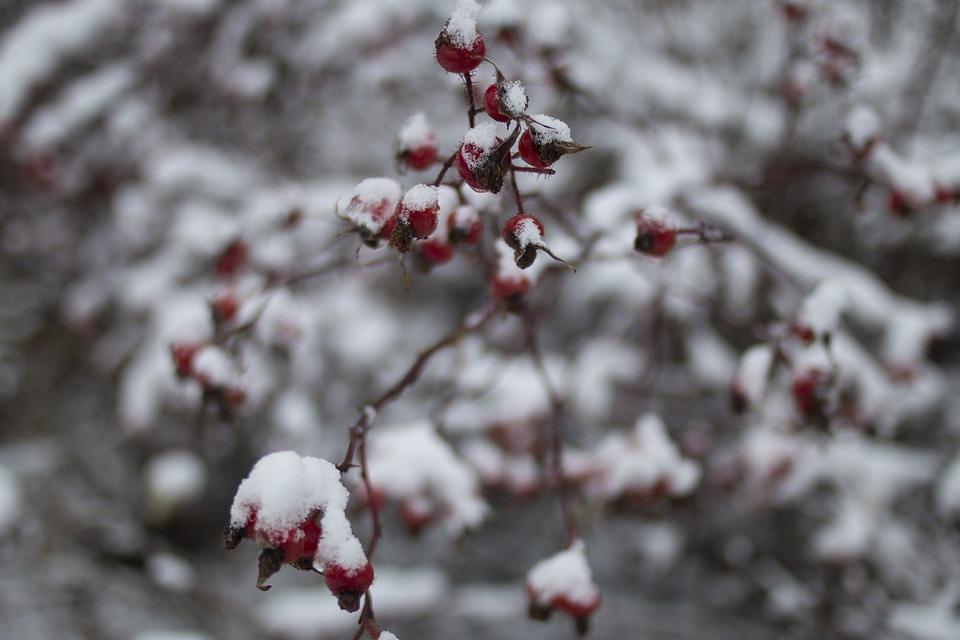
Winterizing Beds and the Garden: How to Do It
FAQ
When is the best time to sow runner beans?
They should be sown directly into the open ground from mid-May to the end of June. Runner beans are not usually pre-sown, but are sensitive to cold. You should therefore wait until after the Ice Saints before sowing.
The seeds are placed about 3 cm/1.2 in deep in the soil, pressed down well and kept moist until germination.
Do pole beans need a climbing aid?
Yes, be sure to attach a climbing aid. You can bury 2-3 m high wooden poles vertically or tie them together to form a bean tipi.
When and how do you harvest runner beans?
The harvest time is around 75 - 100 days, depending on the variety. Runner beans should be harvested early, as long as they are young and tender.
